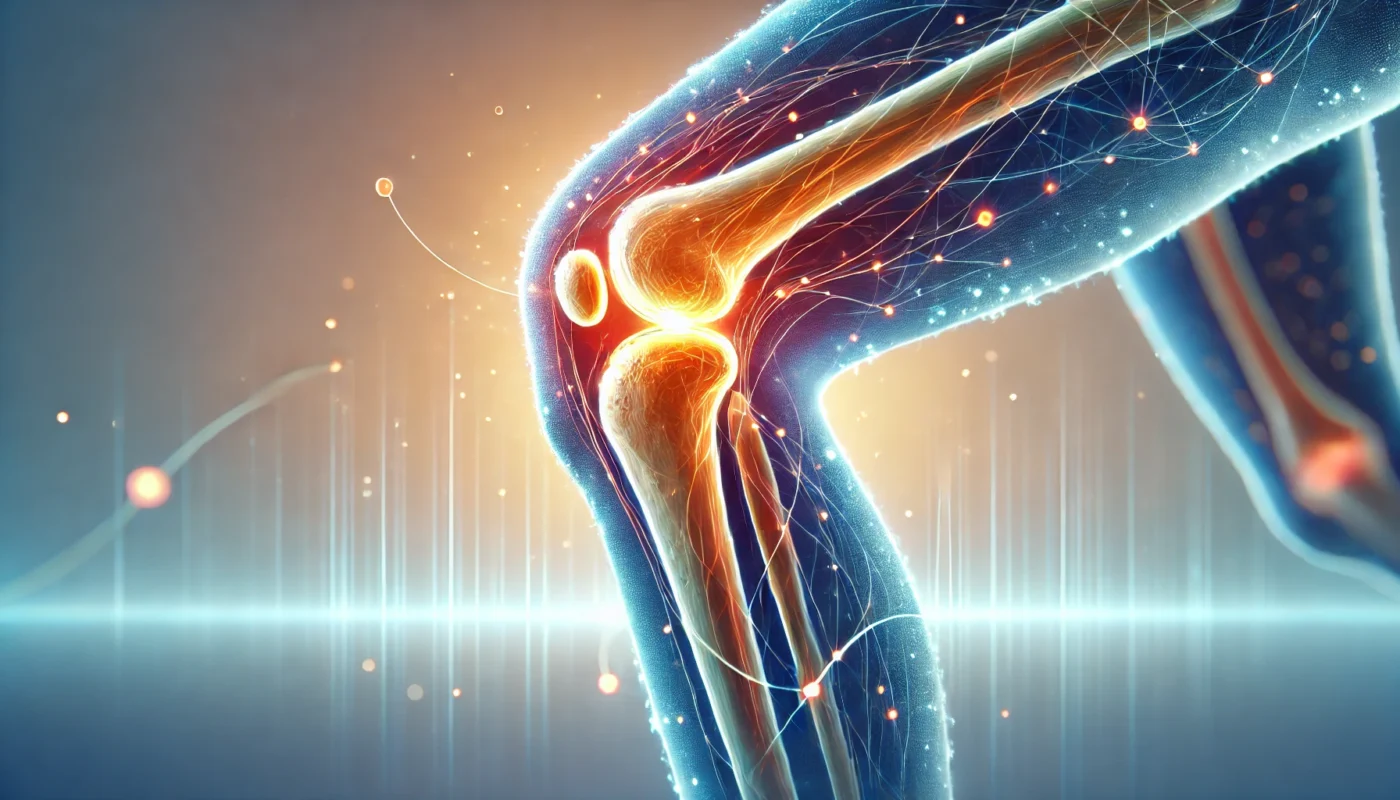Arthritis is a common condition that causes pain and inflammation in the joints. It affects millions of people worldwide, impacting their quality of life.
One of the most frequently asked questions is, “Is Tylenol good for arthritis?”
Tylenol, also known as acetaminophen, is a popular over-the-counter medication. It’s often used to relieve mild to moderate pain and reduce fever. But how effective is it for arthritis pain?
This article aims to explore the effectiveness of Tylenol in managing arthritis pain. We’ll delve into the science behind how Tylenol works and compare it with other pain relievers like ibuprofen and Advil.
We’ll also provide practical advice on how to use these medications safely and effectively. Our goal is to help you make informed decisions about your health and wellness.
Whether you’re a fitness enthusiast, a health enthusiast, or a medical patient, this article is designed to provide you with detailed, practical, and scientifically-backed information.
So, let’s begin our exploration of Tylenol’s effectiveness for arthritis pain.
You May Also Like: Natural NSAIDs: Benefits and Side Effects
Understanding Arthritis and Pain Management
Arthritis encompasses a range of conditions characterized by joint inflammation and pain. Osteoarthritis and rheumatoid arthritis are the most common types. Each has unique causes and symptoms.
Osteoarthritis results from wear and tear on joints. It leads to cartilage breakdown, causing pain and stiffness. Rheumatoid arthritis is an autoimmune condition. It involves the immune system attacking joint linings, producing inflammation.
Managing arthritis requires a comprehensive approach. Pain relief is crucial for maintaining quality of life. Various strategies, including medications, therapy, and lifestyle changes, can help manage arthritis symptoms.
Painkillers are often a first line of treatment. They provide temporary relief and improve mobility. Understanding their role is key for effective management. Here’s how different interventions contribute to arthritis management:
- Medications: Provide immediate pain relief and reduce inflammation.
- Physical Therapy: Improves joint function and strengthens muscles.
- Lifestyle Changes: Includes weight management and regular exercise to reduce stress on joints.
With these strategies combined, individuals can achieve better pain control. It’s essential to tailor these options to personal needs, considering medical advice. Let’s explore how arthritis causes pain and the role of painkillers in managing it.
What is Arthritis and How Does it Cause Pain?
Arthritis is a disorder that impacts joints, causing pain and swelling. It can occur in one or multiple joints. This condition affects people of all ages, though it’s more common in older adults.
The pain from arthritis stems from inflammation in the joints. In osteoarthritis, cartilage wears down, leading to bones rubbing against each other. This friction results in pain and loss of movement.
Rheumatoid arthritis causes pain through a different mechanism. The immune system mistakenly attacks healthy joint tissues. This attack leads to swelling, pain, and can eventually damage the joint itself.
Understanding these mechanisms helps in finding effective pain management strategies. It underscores the importance of addressing both symptoms and underlying causes.
The Role of Painkillers in Arthritis Management
Painkillers are crucial in managing arthritis symptoms. They help reduce pain levels, allowing individuals to perform daily activities with less discomfort. Many people rely on them as a key part of their treatment plan.
Over-the-counter medications, like Tylenol and NSAIDs, are commonly used. They can relieve pain and sometimes reduce inflammation. However, each medication works differently, with distinct benefits and side effects.
Tylenol, for instance, is not an anti-inflammatory. It mainly provides pain relief. On the other hand, NSAIDs, such as ibuprofen, target inflammation as well as pain.
Choosing the right painkiller depends on individual needs and medical history. Consulting a healthcare provider is crucial to avoid potential risks and interactions. Painkillers should be used responsibly to ensure safety and effectiveness.
Tylenol for Arthritis: How Does it Work?
Tylenol, known generically as acetaminophen, is widely used for pain relief, including arthritis pain. While it doesn’t reduce inflammation, it can be effective for many arthritis sufferers. Its main action is to block pain signals in the brain, offering relief.
For arthritis, Tylenol targets mild to moderate pain, making daily tasks more manageable. It’s particularly useful for those who are sensitive to NSAIDs or have contraindications. Many find Tylenol beneficial for everyday pain due to its simplicity and effectiveness.
It’s essential to understand Tylenol doesn’t address joint swelling. This is why its role is primarily as a pain reliever, not an anti-inflammatory agent. However, it remains a trusted option for short-term pain management.
In terms of practical use, Tylenol is available in various forms, including tablets and liquid. Dosage flexibility allows patients to adjust based on pain severity and tolerance. Despite its benefits, it’s crucial to adhere to recommended dosages to avoid liver damage.
Combining Tylenol with holistic strategies, like exercise or physical therapy, often yields better results. It forms part of a comprehensive approach to managing arthritis, helping many lead active lives with less discomfort.
Is Tylenol an NSAID and Why Does it Matter?
Tylenol is not classified as an NSAID, or nonsteroidal anti-inflammatory drug. This distinction matters significantly in arthritis treatment. Unlike NSAIDs, Tylenol does not reduce inflammation. It focuses solely on alleviating pain.
The absence of anti-inflammatory properties means Tylenol is less effective against severe joint inflammation. However, this can be advantageous for individuals needing pain relief without affecting stomach linings. NSAIDs often cause gastrointestinal issues, which Tylenol tends to avoid.
For patients on blood thinners, Tylenol is a preferred choice. It doesn’t interfere with blood clotting, unlike many NSAIDs. This makes it a safer option for those managing concurrent health conditions.
The Safety Profile of Tylenol for Long-term Use
Tylenol’s safety for long-term use is often highlighted. It’s generally considered safe when used as directed. However, excessive dosages can lead to serious liver damage, underscoring the importance of adhering to guidelines.
For chronic use, regular monitoring by a healthcare provider is essential. They can advise on dosage and watch for any potential side effects. Such supervision ensures Tylenol remains a safe component of pain management strategies.

Comparing Tylenol with NSAIDs for Arthritis Pain
When managing arthritis pain, choosing the right medication is crucial. Tylenol and NSAIDs, like ibuprofen and Advil, serve different purposes. They each have strengths and weaknesses in treating arthritis symptoms.
Tylenol is typically used for mild to moderate pain relief. It does not reduce inflammation, which can be a limitation for some patients. However, it lacks the gastrointestinal side effects commonly associated with NSAIDs.
NSAIDs are often preferred for inflammatory arthritis due to their dual-action. They reduce inflammation and relieve pain, offering comprehensive treatment. However, they are not without risks, including gastrointestinal bleeding and kidney damage.
For some patients, balancing these risks and benefits is key. Here are a few considerations:
- Gastrointestinal Issues: Tylenol is preferred for those with a history of stomach problems.
- Inflammation Relief: NSAIDs provide broader symptom control, addressing both pain and inflammation.
- Long-Term Safety: Regular monitoring is needed with both, but especially with NSAIDs for potential side effects.
In the end, personal health profiles and doctor recommendations guide this choice. Some may find alternating between Tylenol and NSAIDs beneficial. However, this should always be done under professional guidance.
Tylenol vs. Ibuprofen: Which is More Effective?
The effectiveness of Tylenol versus ibuprofen varies between individuals. Tylenol offers solid pain relief without reducing inflammation. This makes it a go-to for uncomplicated arthritis pain management.
Ibuprofen, on the other hand, is part of the NSAID family. It tackles both inflammation and pain. This makes it more suitable for conditions where inflammation is a key component, like rheumatoid arthritis.
Choosing between them often hinges on the nature of the arthritis. For inflammatory forms, ibuprofen may provide more comprehensive relief. Conversely, for patients sensitive to NSAIDs, Tylenol becomes a safer choice. Consulting with a healthcare provider can help tailor the best approach for individual needs.
Advil and Other Alternatives for Arthritis
Advil, another brand of ibuprofen, shares similar properties and risks. It’s effective for both pain relief and reducing inflammation, making it a robust choice for many. However, like all NSAIDs, it carries risks of stomach discomfort and should be used with caution.
In addition to Advil, there are other alternatives for managing arthritis pain. Naproxen is another NSAID that offers extended relief with similar risks and benefits. Patients with more severe symptoms might find prescription options more suitable.
Some patients might also explore topical NSAIDs for localized pain relief. These provide pain reduction with lower systemic risk and are an option for those who cannot take oral NSAIDs. Ultimately, the right choice will depend on individual health factors and personal preferences, highlighting the importance of working closely with a healthcare provider.
Dosage and Risks: Using Tylenol Safely
Proper dosage of Tylenol is vital for safe and effective arthritis management. Adhering to recommended guidelines minimizes health risks, particularly liver damage. It’s crucial to understand both dosage limits and potential interactions with other substances.
The general recommendation is not to exceed 3,000 mg of Tylenol daily. This dosage effectively manages mild to moderate arthritis pain for most patients. It is essential to follow these limits to avoid adverse effects.
Here’s what to consider:
- Health Profile: Liver disease or chronic alcohol use may necessitate lower doses.
- Concurrent Medications: Avoid combining Tylenol with other acetaminophen-containing products.
- Consultation: Always consult a healthcare provider before significant adjustments.
Overuse is a concern. Taking more than advised can lead to serious liver damage, a critical risk associated with Tylenol. Symptoms of overdose may include nausea, vomiting, and loss of appetite. Immediate medical attention is imperative if an overdose is suspected.
Recommended Dosage and Potential Overuse
For adults, Tylenol’s safe dosage typically caps at 3,000 mg per day. Dividing doses throughout the day, usually 500 mg every four to six hours, is common practice. Understanding these guidelines can prevent inadvertent overuse.
Exceeding this dosage can prove hazardous, especially for individuals with preexisting liver conditions. Chronic overconsumption, even in small excess amounts, can damage the liver over time. This risk underscores the importance of being vigilant about total daily intake.
Reading medication labels is essential to avoid unintentional overdoses. Many over-the-counter drugs contain acetaminophen, which can add up quickly. Therefore, awareness and proactive measures are key in preventing overuse and maintaining health safety.
Side Effects and Interactions to Watch For
Tylenol generally has a favorable safety profile when used correctly. However, side effects can occur. The most significant concern is liver damage, particularly at higher doses or with prolonged use.
Drug interactions are another consideration. Combining Tylenol with alcohol increases liver damage risk. Additionally, some prescription medications may interact with acetaminophen. Consulting with a healthcare professional before starting any new medication is advisable to prevent adverse effects.

Holistic and Alternative Approaches to Arthritis Pain
Exploring alternative therapies for arthritis can offer significant relief for many. These methods work alongside conventional treatments like Tylenol. They provide a broader approach to pain management.
Complementary therapies often include practices such as acupuncture, which targets specific points to alleviate pain. Massage therapy can reduce tension and promote circulation in affected joints. These techniques can complement traditional medication regimens.
Lifestyle changes also play a crucial role. Simple shifts like adopting a proper sleep schedule can greatly improve general wellbeing. Stress management techniques such as mindfulness and yoga can reduce pain perception and improve mood.
Here’s a list of alternative approaches to consider:
- Acupuncture: Targets pain through strategic needle placement.
- Massage Therapy: Reduces muscle tension and promotes relaxation.
- Mindfulness Meditation: Focuses on stress reduction and improving mental health.
- Yoga: Enhances flexibility and reduces joint stress.
- Herbal Supplements: Ingredients like turmeric and ginger may reduce inflammation.
Holistic approaches often need time to show benefits. They require commitment and consistency to achieve the best results. Pairing these therapies with medical advice ensures safety and enhances overall efficacy.
Complementary Therapies and Lifestyle Changes
Acupuncture remains a popular choice for arthritis sufferers. Some find significant pain relief through regular sessions. It aims to restore the body’s energy balance, potentially reducing pain.
Massage therapy is another valuable option. By focusing on relaxation and muscle relief, it complements pain management. Regular massages can improve joint flexibility and blood flow.
Implementing lifestyle changes cannot be overstated. Developing a sleep routine helps reduce inflammation and stress levels. Additionally, integrating mindfulness practices into daily life supports better coping mechanisms, helping manage the daily challenges of arthritis.
The Role of Diet and Exercise in Managing Arthritis
Diet and exercise are pivotal in arthritis management. Specific foods possess anti-inflammatory properties. Integrating these can reduce swelling and discomfort.
A balanced diet rich in omega-3 fatty acids, such as found in fish, supports joint health. Similarly, fruits high in antioxidants, like berries, aid in reducing inflammation.
Regular exercise is equally crucial. Low-impact activities like swimming or cycling maintain joint function and reduce stiffness. Consistent physical activity also assists in weight management, easing pressure on joints and enhancing overall health.
Practical Tips and Strategies for Arthritis Sufferers
Managing arthritis requires a multifaceted approach. Incorporating various strategies can make a big difference. Simple adjustments in daily routines can lead to notable improvements in pain management and quality of life.
Staying active is important. Engage in regular, gentle exercises. This helps maintain mobility and reduce joint stiffness. Consult with a physical therapist if needed, to tailor activities to personal abilities and limitations.
Diet can also play a critical role in managing arthritis. Focus on anti-inflammatory foods like leafy greens and fatty fish. These support joint health and may alleviate symptoms over time.
Here are some practical strategies to consider:
- Heat and Cold Therapy: Use heating pads for joint stiffness and cold packs for swelling.
- Stress Reduction Techniques: Practices like deep breathing or meditation can reduce pain perception.
- Proper Footwear: Supportive shoes can help distribute weight evenly and reduce joint strain.
- Hydration: Adequate water intake supports joint lubrication and overall health.
Another essential tip is to maintain a journal. Logging symptoms, triggers, and medication responses can provide insights. This data supports better communication with healthcare professionals.
Monitoring Pain and Medication Effectiveness
Keeping track of pain levels is crucial. Regular assessments allow individuals to notice patterns. This helps in identifying what aggravates or alleviates pain.
Document the effectiveness of medications like Tylenol. Record when it’s most helpful and any side effects that occur. This information is vital when adjusting treatment plans with healthcare providers. Consistent monitoring can lead to a more customized and effective pain management strategy.
When to Consult a Healthcare Provider
It is vital to recognize when medical advice is needed. Consult a healthcare provider if arthritis pain worsens or new symptoms appear. This can prevent potential complications and lead to timely adjustments in treatment.
Additionally, if medication, such as Tylenol, is not relieving pain, reach out for guidance. Healthcare providers can suggest alternative treatments or combinations. They offer insights that align with an individual’s unique health profile, ensuring safety and enhanced wellbeing.

Conclusion: Making Informed Decisions About Arthritis Pain Management
Successfully managing arthritis pain requires thoughtful decisions and a personalized approach. Understanding the differences between pain relievers like Tylenol and NSAIDs is key. Balancing medication use with lifestyle changes ensures comprehensive care.
Ultimately, choosing the right treatment plan involves careful consideration of personal health needs. Combining medical advice with self-care strategies can optimize outcomes. Stay informed about new research and therapies for continuous improvement in managing arthritis.
Summary of Key Takeaways
Tylenol can be effective for managing arthritis pain. Use it with caution, especially considering its safety profile compared to NSAIDs. Complement it with lifestyle modifications.
Encouragement to Seek Personalized Medical Advice
Consult healthcare professionals regularly to tailor arthritis treatment effectively. Personalized advice guides safe and effective pain management. It helps align treatments with individual health requirements for the best possible relief.
Further Reading:
Mayo Clinic: Arthritis pain: Do’s and don’ts
Cochrane Library: Acetaminophen for osteoarthritis
HSS: Advil vs. Aleve vs. Tylenol: What’s the Difference?
reading medication labels, acetaminophen, Tylenol, liver damage, drug interactions, arthritis pain management, holistic approaches, alternative therapies, acupuncture, massage therapy, mindfulness, yoga, herbal supplements, diet and exercise, anti-inflammatory foods, practical tips for arthritis, pain monitoring, healthcare provider consultation, personalized medical advice, lifestyle changes
Important Note: The information contained in this article is for general informational purposes only, and should not be construed as health or medical advice, nor is it intended to diagnose, prevent, treat, or cure any disease or health condition. Before embarking on any diet, fitness regimen, or program of nutritional supplementation, it is advisable to consult your healthcare professional in order to determine its safety and probable efficacy in terms of your individual state of health.
Regarding Nutritional Supplements Or Other Non-Prescription Health Products: If any nutritional supplements or other non-prescription health products are mentioned in the foregoing article, any claims or statements made about them have not been evaluated by the U.S. Food and Drug Administration, and such nutritional supplements or other health products are not intended to diagnose, treat, cure, or prevent any disease.

